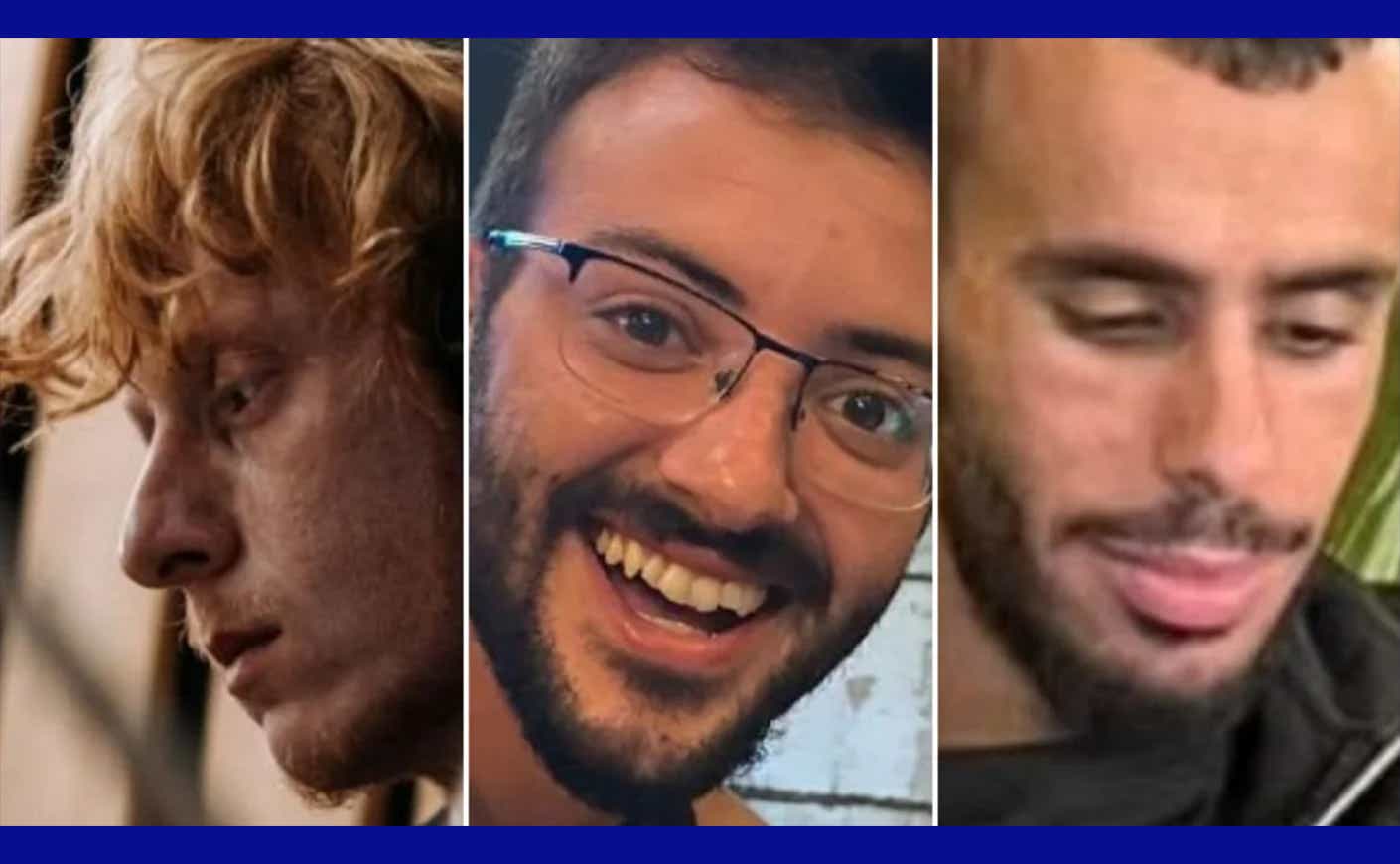An investigation is underway after Israel’s military revealed on Friday that it mistakenly shot and killed three hostages who were being held captive by Hamas.
In a preliminary report released a day after the tragedy, the Israel Defense Forces (IDF) said it mistook three hostages as a threat in a battle-torn area of Gaza. They’ve since been identified as Yotam Haim, Samer Talalka, and Alon Shamriz, all in their 20s. The men were among more than 240 people abducted during Hamas’ unprecedented Oct. 7 attack on Israel, in response to which, Israel declared war on the militant group.
Their deaths are raising questions about the conduct of the Israeli army, and have sparked renewed calls for another ceasefire. The incident also comes alongside the news that an Israeli sniper allegedly shot and killed a mother and daughter at a Gaza church on Saturday. According to the Latin Patriarchate of Jerusalem, “One was killed as she tried to carry the other to safety.” Pope Francis addressed the news on Sunday, saying: “God puts an end to war… the bow he breaks and the spear he snaps.”
As more details come to light, here’s what we know about the hostages’ deaths, and how world leaders have responded.
Why were three hostages killed by the IDF?
An Israeli official who spoke on condition of anonymity told journalists that the trio emerged shirtless and waving a white flag from a building near a group of Israeli troops in the Gaza City neighborhood of Shejaiya. According to CNN, at least one Israeli soldier “felt threatened” and opened fire, killing two of the men immediately. The third hostage was wounded and retreated into a nearby building from which a call for help in Hebrew was heard, according to the official. The soldier’s battalion commander then ordered the firing to stop, but there was another burst of gunfire and the remaining hostage later died.
The IDF said the incident happened during a period of “intense combat” and that soldiers were on alert for Hamas militants to try to ambush them, possibly while wearing civilian clothes. On Friday, the IDF said Hamas used deception tactics — like playing sounds of crying or children speaking in Hebrew from speakers — to try to trick Israeli soldiers into a trap in northern Gaza.
After realizing its error in the fatal shooting, the Israeli military “began reviewing the incident immediately,” and acknowledged that their deaths were a violation of the rules of engagement. “The shooting of the hostages was carried out contrary to the open-fire regulations,” Israeli military chief Lt. Gen. Herzi Halevy told The New York Times. “It is forbidden to shoot at those who raise a white flag and seek to surrender.” Now as a result of the accidental killings, Israeli soldiers have been instructed to “exercise additional caution” when encountering anyone in Gaza.
At a news conference, IDF Spokesperson Daniel Hagari said the reason a soldier started shooting in the first place was because they weren’t anticipating being approached by hostages that day. Since that briefing, new details have emerged: The IDF said it found a sign written on what appeared to be a white sheet that said read “Help! 3 hostages,” which appeared to have been written using food. This sign was found in a building near where the three hostages were killed.
Despite this investigation and preventative measures, the account of how the hostages died has raised questions about the conduct of Israeli ground troops. Since fighting broke out between Hamas and Israel, Palestinians have reported Israeli soldiers opening fire on fleeing civilians.
What do we know about the hostages?
All three men were abducted on Oct. 7. While Haim and Shamriz were kidnapped from Kibbutz Kfar Aza, Talalka was taken near Kibbutz Nir Am.
Before their abductions, Haim was preparing to perform with his band Persephore at a Metal Music Festival in Tel Aviv, while Talalka was working at a chicken hatchery. According to The New York Times, Shamriz was getting ready to start college and study computer engineering.
Right up until their tragic deaths, their families had been holding out hope that they’d be returned safely. “We had so many hopes, expectations, that he would come back to us,” Talalka’s cousin, Alaa Talalka told Israel’s public broadcaster, Kan.
At the same time, he added that the family isn’t interested in pointing fingers over “who is guilty and who is not” when it comes to his cousin’s death. “The families are thinking only of how to bring the hostages back alive,” he said. “This is the time to ask for the war to end.”
What has been the response?
After news of the accidental shootings broke, demonstrators gathered in Tel Aviv to demand immediate action to bring back the rest of the hostages in Gaza. “The clock is ticking, and it’s against the hostages,” retired IDF major general Noam Tibon told CNN.
Some of the hostages’ families have also spoken out against Prime Minister Benjamin Netanyahu, who they argue is more concerned with getting rid of Hamas than it is freeing the more than 100 remaining hostages.
“The Israeli government needs to be active,” Chen said. “They need to put an offer on the table, including prisoners with blood on their hands,” said Ruby Chen, who’s the father of Itay Chen, about Palestinians being held in Israeli jails.
This increasing criticism of Netanyahu still may not see him alter his position. In his first remarks since the killings, he addressed the nation and said that the war must go on against Hamas, which aims to destroy Israel and erase Jewish people. “We are in a war for our existence,” he said. Today, Defense Sec. Lloyd Austin will press Israeli officials to define the milestones they’re aiming to reach before transitioning to the next phase of the war with Hamas.









